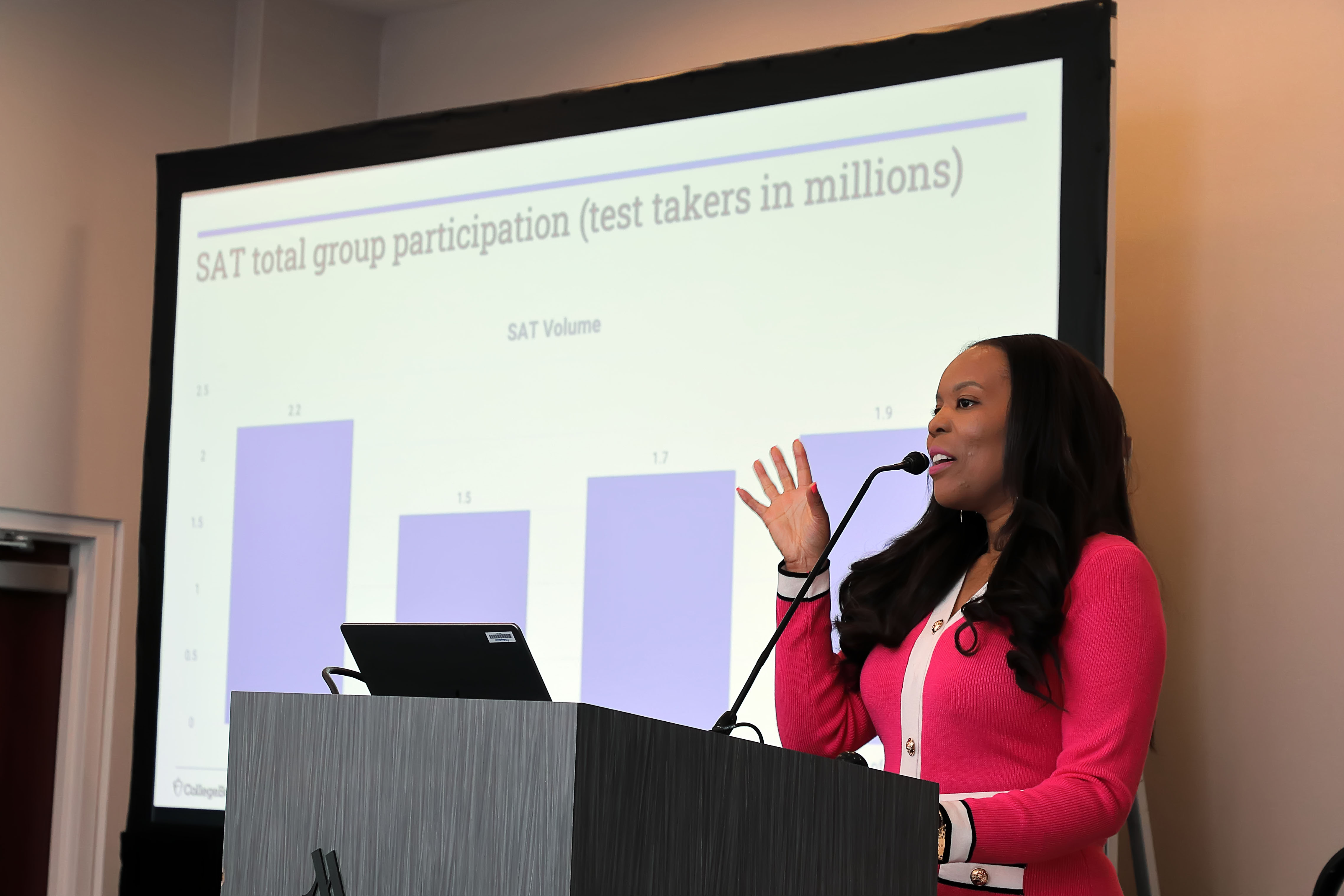A Dream Deferred | HBCU Conference 2024
Unlocking the Future of Assessment: Navigating the Digital SAT Suite
With the recent transition to digital testing, Nicole Gibbs, senior director of external engagement at College Board, presented outcomes for the SAT® and its digital launch at the 2024 A Dream Deferred™ conference. She delved into what has been learned, what is changing, and how students and educators feel about the digital SAT Suite.

Pictured: Nicoles Gibbs, Senior Director, External Engagement, College Board
State of the SAT Suite
The SAT has long been a crucial milestone for students aspiring to go to college, showcasing their academic prowess to universities and scholarship programs. It remains a fairer measure than GPA alone, providing an additional layer of evaluation.
Recent data shows that over 80% of students want the ability to share their SAT scores, recognizing its value beyond mere admissions criteria. With over 1.9 million graduating students participating in the SAT in 2023, it's clear that the test continues to play a significant role in the education landscape. The transition to a fully digital SAT Suite, starting with the class of 2024, marks a significant shift in how the test is administered.
Digital SAT Suite Assessment and Enhancements
The digital SAT has ushered in a new era for testing. In March 2024, the digital SAT launched in the U.S after a year of it being piloted internationally. Some key benefits of this new format include:
- Longer testing windows for School Day testing
- More flexibility for state and district SAT Suite users to schedule testing according to their needs
- Increased test security, as each student gets a unique but highly comparable test form
As of March 25, 2024, trends indicate that about 840,000 students have taken the digital SAT, PSAT™ 10, and PSAT™ 8/9 during the school day since the in-school testing window opened, with a 99.8% submission rate via the Bluebook™ digital platform.
Through Bluebook, students are able to send their scores to four schools for free and are given a three-day window after the test to do so. Students have experienced better testing days since the launch of digital testing.
Students say they are more comfortable and confident testing digitally as tests are an hour shorter, leaving students feeling less exhausted, with shorter and more engaging reading passages.
In-School Educator Experience
Educators have also expressed enthusiasm for the digital format, citing shorter test days and a more seamless experience. The digital transition also brings benefits such as increased flexibility in testing windows and enhanced test security.
One teacher left feedback saying, “The streamlined directions and the single-code sign-on made the test delivery the easiest and most convenient that I've ever experienced. Congrats, and keep going!”
Going digital has also enhanced the design and feel of the reporting portal. Educators can now run aggregate performance reports by administration and academic year and customize fields for roster reports.
Furthermore, with the knowledge and skills report, educators can view aggregate student performance on the Reading and Writing and Math sections of the digital SAT, allowing them to make teaching adjustments where needed based on where their students are.
Connecting Students to Careers
With over 1.34 million users, the BigFuture School app allows for personalized data based on a student’s score. Students who have an SAT Suite of Assessment score in Career Search will see how their math, reading, and writing skills (measured by the SAT) map to the quantitative and literacy skills needed for certain jobs. This helps students to explore different career pathways and inspires them to start planning their future early.
As the College Board continues to innovate, the digital SAT Suite represents a step towards a more dynamic, accessible, and student-centered assessment experience. This evolution ensures that the SAT remains a relevant and valuable tool for students, educators, and institutions alike.
